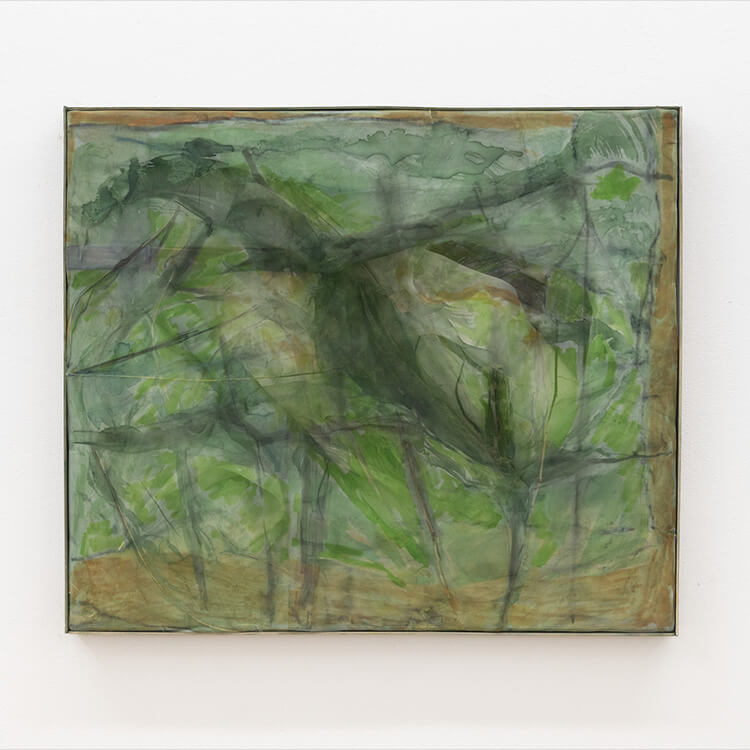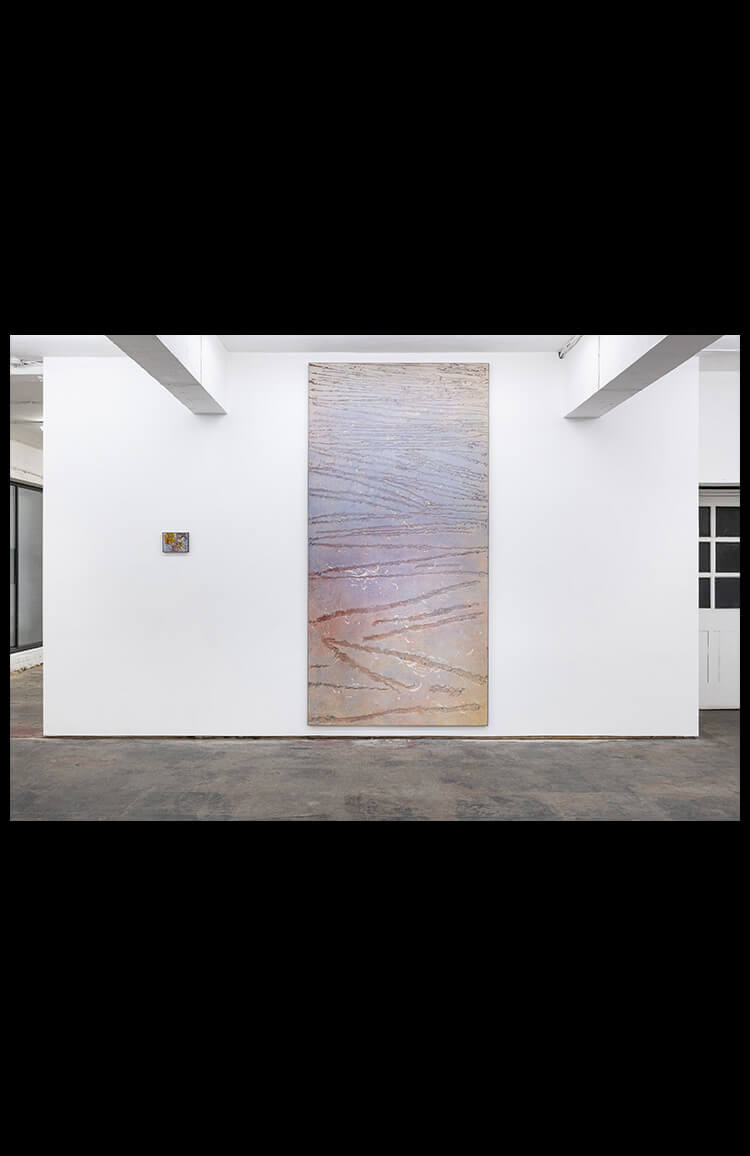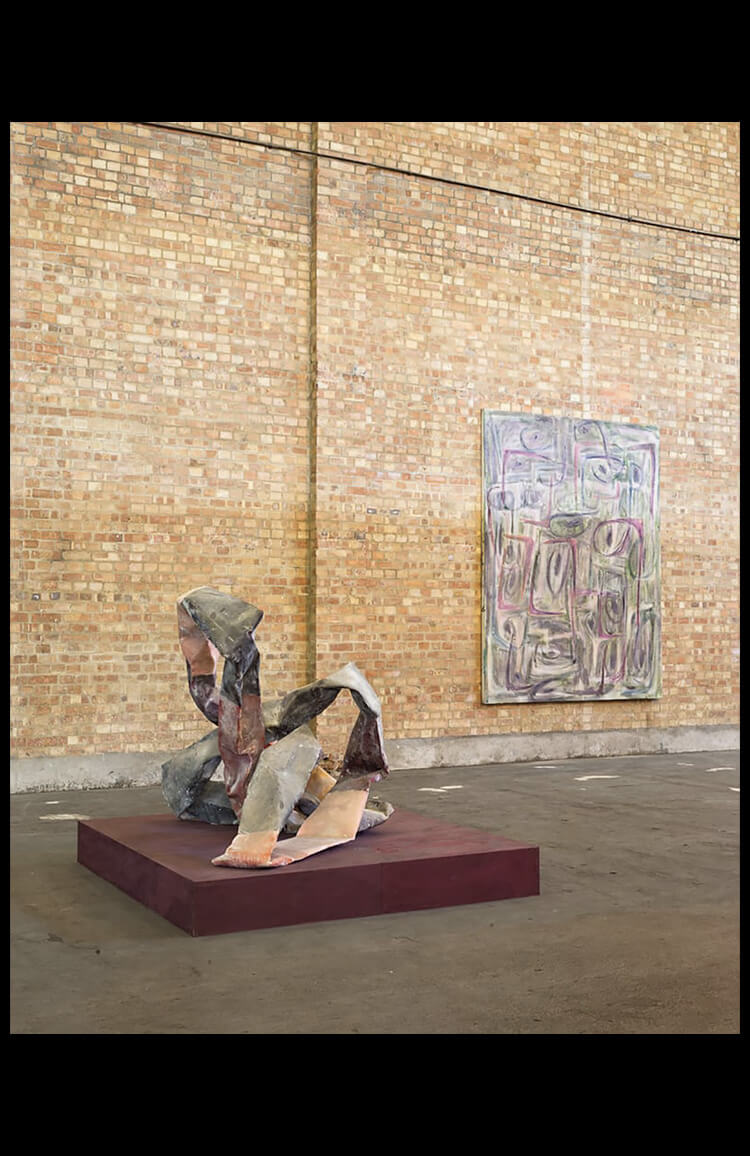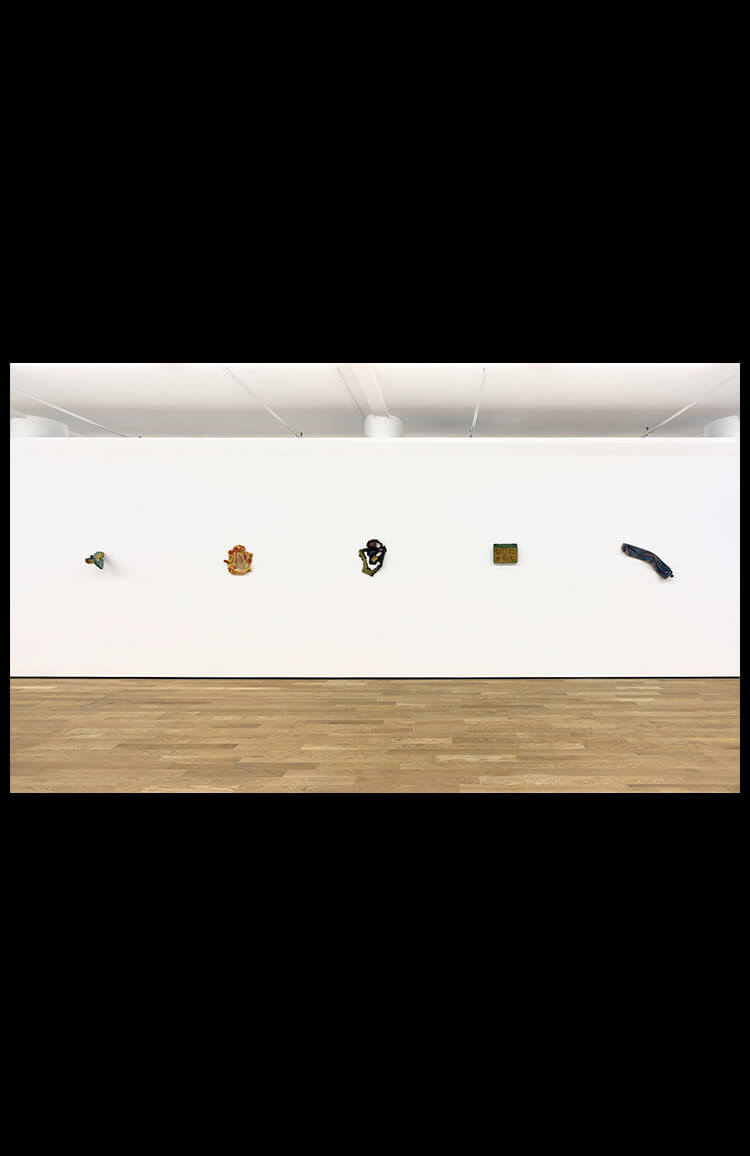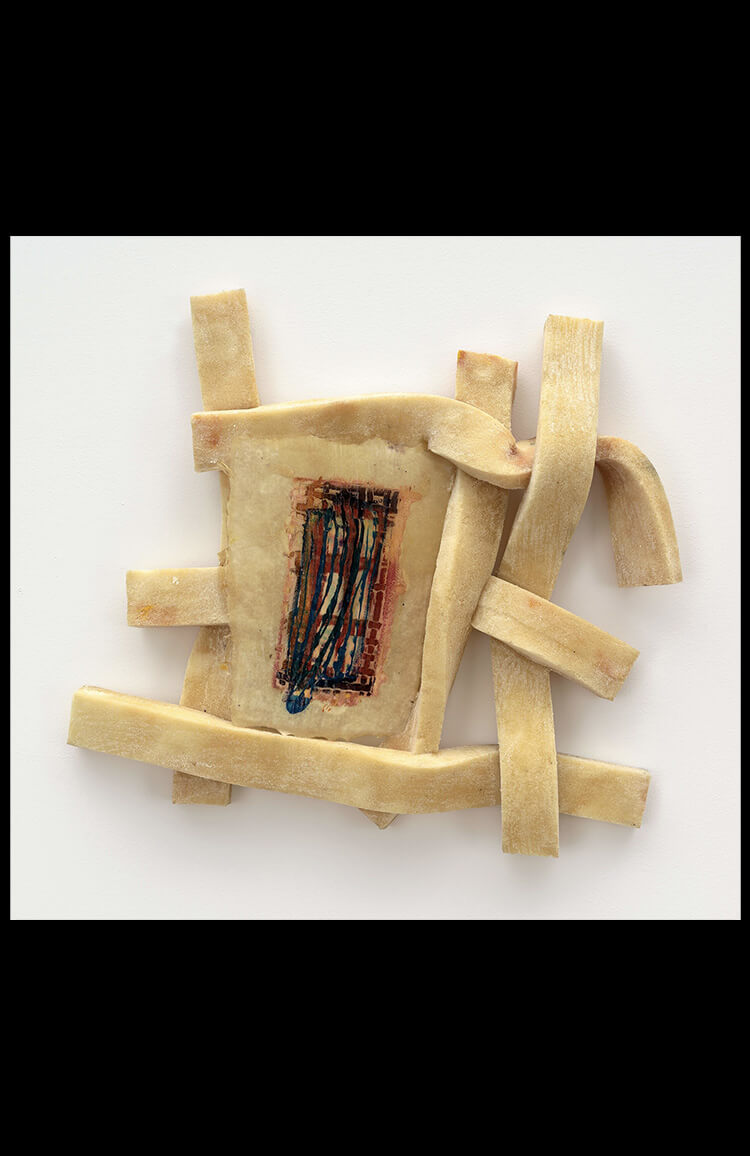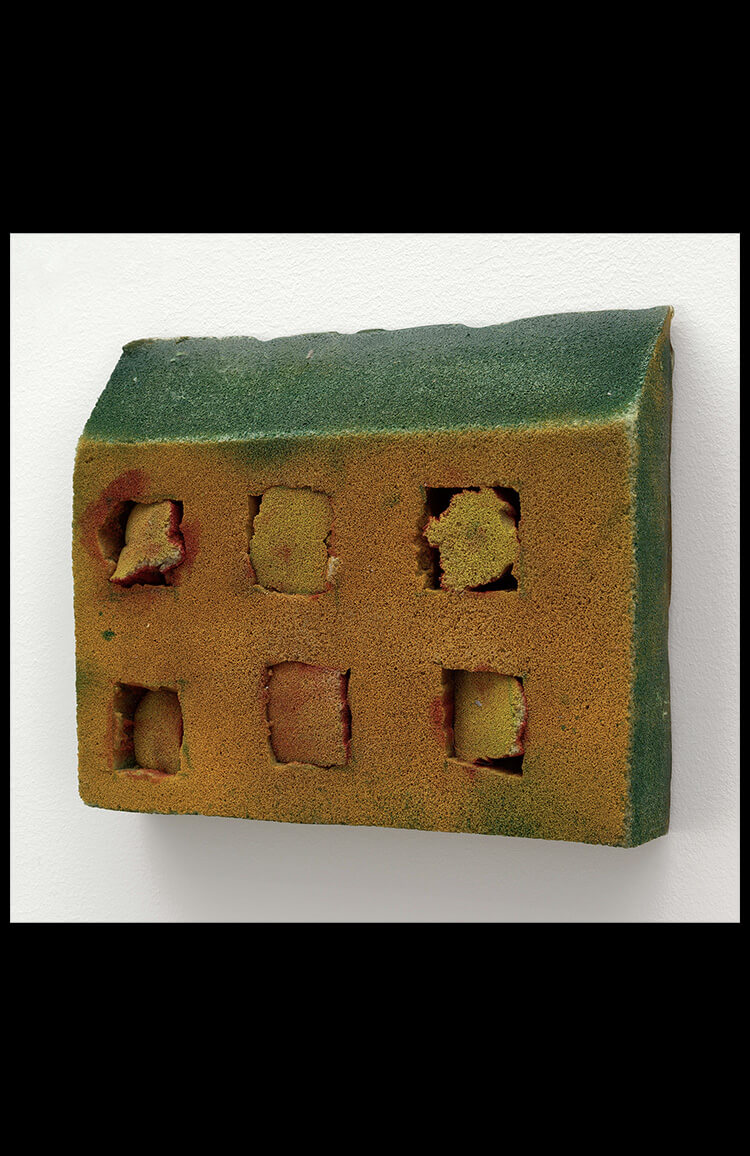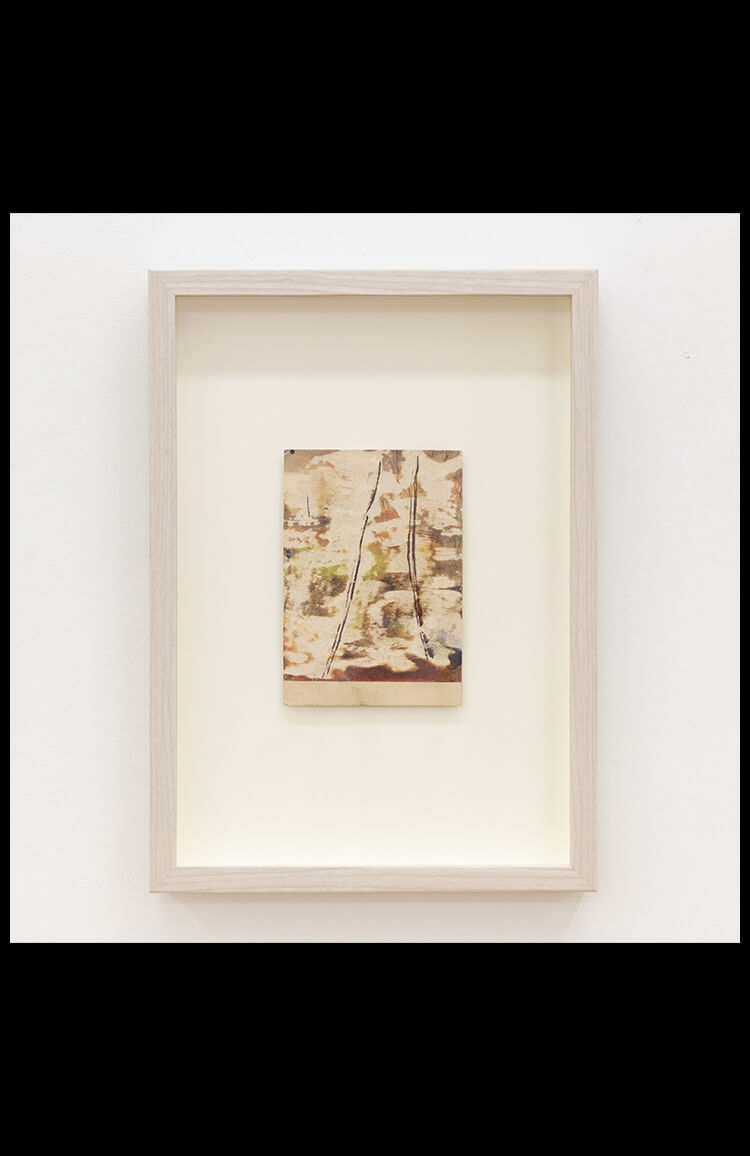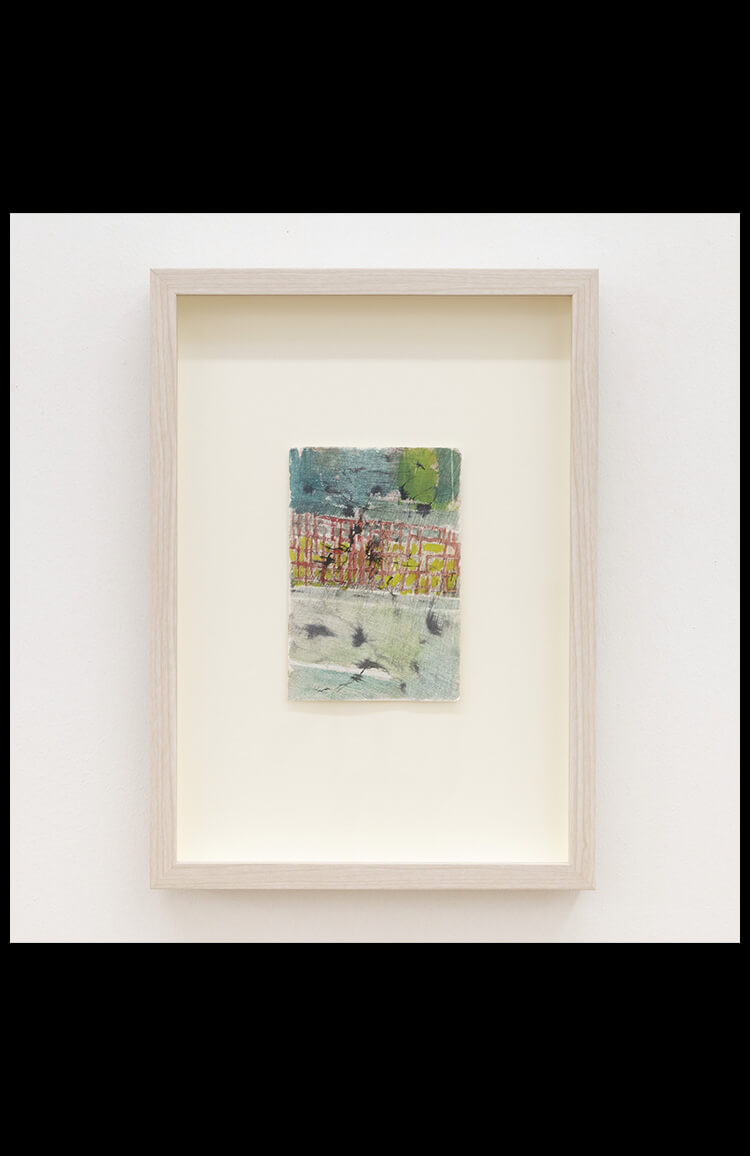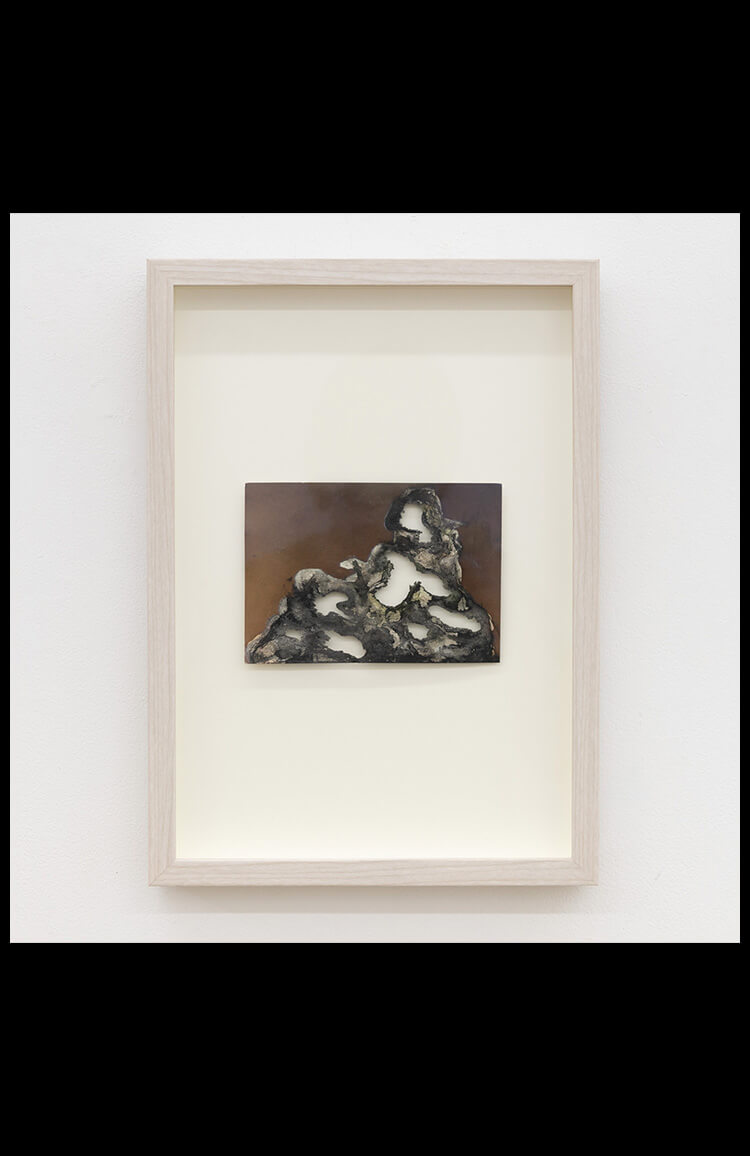IL__It was in a catalogue of “Young London” held at V22 in 2011, focusing on young emerging artists based in the UK, that I got to know about your work for the first time. In that exhibition, you showed a large sculpture made of coloured paper and resin and paintings. Also, in your solo exhibition, “Relief", at Foxy Production (New York) in 2016, you presented a series of sculptures made using materials, such as sponges and coloured papers, that seemed to be produced in the process of making a painting and were hung on the wall alongside the paintings.
Are the sculptures and paintings linked to each other?
GH__They've always run alongside each other and changed depending on what the others were up to. I'll go through phases when I'm working very fluidly between the two and times when I'm more concentrated on painting. Rarely will it be that I only make sculptures.
They're both made on the floor, so the process feels related. The sculptures are made from soaking upholstery foam in resin. I fill a large bucket with resin and let the foam soak it up and then arrange the forms on the floor. This part feels the most like drawing. It then sets in this state. To me, the forms feel like brush marks in that when you make a mark, it feels frozen in time.
IL__I see; it's like freezing an image the moment it occurs.
Going back to the story, when I looked at your paintings in person, I felt that they were constantly changing; they seem to have a different expression depending on the light and the weather, or rather, they seem to be breathing quietly as if they were some creature. Are you conscious of incorporating these organic elements into your work?
GH__Ooh, that's lovely! I love the feeling of working out an artwork’s personality and which parts of its personality change while others remain constant.
Going back to talking about looking, images of my paintings kind of lose a lot of that. When you see my paintings on a screen, they won't behave in that way. It's only with the physical thing, where, depending on where you're standing or how you’re focusing, certain layers become apparent. The ones you’re talking about are built up of different layers of drawings. There are different references, and depending on how you look, different references become more apparent.
These postcards and photos are the rawest state of the references. *Points to a pile of postcards on the table* It's kind of where everything comes from. And my drawings, too.
In the paintings, I'll often combine multiple parts from drawings or photographic works, say, an architectural detail or a drawing of light reflecting on the water. It'll be about how these multiple images bleed in together. But then, like you said, if your focus changes, one thing might pop into the foreground. The end feeling is knowing that you are looking at something observed from the world without necessarily being able to name it.
IL__I see. Speaking of your postcard drawings, In your solo presentation that will start on the 7th of August at our project space, im labor, you’ll show your postcard drawings. Today, you brought some from the series to im labor to document them, and it seems like there are more than 500 of them, and some were actually drawn on printed photographs. How long have you been doing this series? Also, how does this postcard series function in your practice?
GH__About 15 years ago now, I started painting directly on them while I was still at the Royal Academy of the Arts. I was actually making paintings from postcards in my BA, so I've had the postcards around me for even longer than that.
For a long time, they lived alongside the paintings, where some forms would come through the back door into the paintings. Recently, I've been using them much more directly and actually trying to replicate or use them as studies for other paintings. I've also been making very large prints and treating them the same way I do the postcards and photographs.
The photographs started in the last year or so. Originally, I just wanted to print out all my iPhone photos, as I was conscious that I photograph a lot of things I pass or that I'm drawn to, but they kind of just live in this cloud. So, I wanted something more physical. Then, the impulse took over to treat them in a way that was similar to the postcards, but they have many more personal references. There's one of my daughter at the aquarium, there are some of failed sculptures from the studio, a chess game I was playing, a bowl of cherries – everything, really.
IL__15 years – that's a long time. I like that you can see traces of actual use, like someone's handwriting, on the backside of the postcards.
GH__Yeah, I like the glimpses of all these different people's stories. But it’s more about the image itself. I also get off on the physical nature of the postcard: its size, the type of paper, colour of the print – all these things. The title of each piece is the title of the original postcard, so there is always a way back to the original image.
IL__The screen's texture of these postcard drawings is very distinctive, which can also be said about your painting work; though some of them look like they've been roasted over a fire, and some of them look like they've been sanded.
GH__I basically destroy the image, sand it back or burn it and then rebuild it. In the rebuild, it takes on a new presence. You said something interesting before about destroying and then rebuilding in relation to your paintings…
IL__I paint, too, and yes, I often destroy an image and then rebuild it. By repeating actions of sanding, painting over and redrawing the image I have created using the faint lines and dots as indicators in the process, the image becomes inevitable. It's as if the strength of the image increases. There are many traces of such repeated acts of destruction and rebuilding in your work – do you do that with an intention?
GH__I love the idea of it being inevitable. Like you are channelling something.

